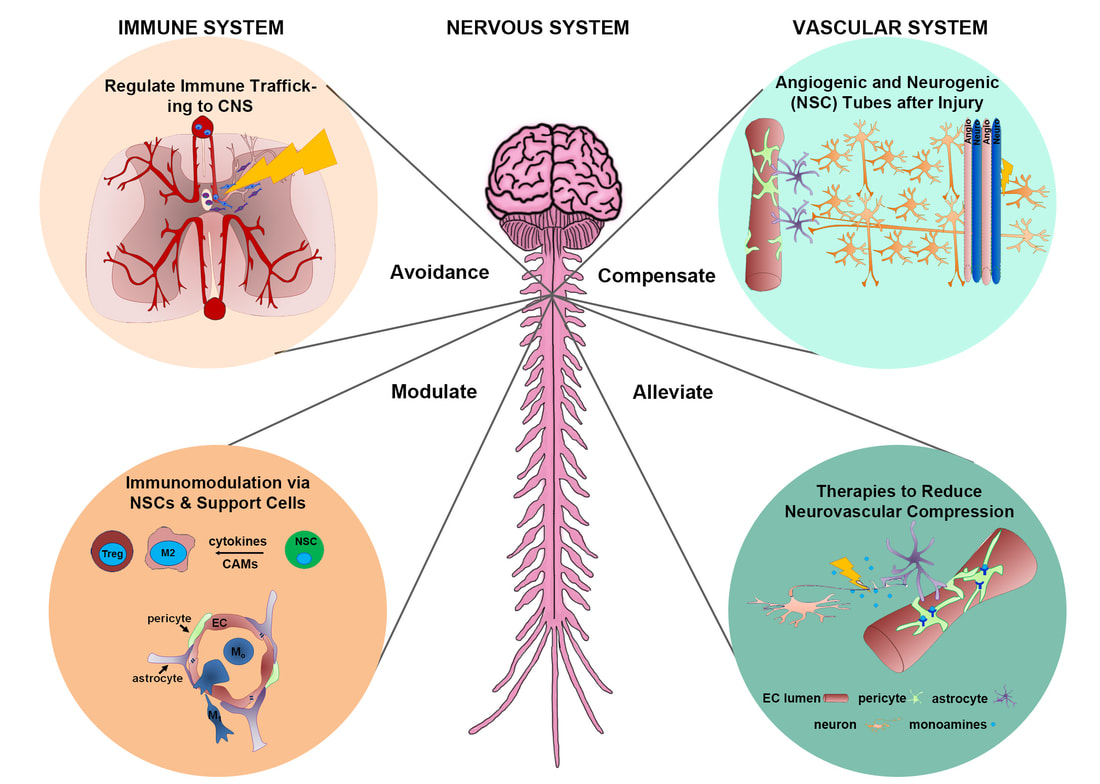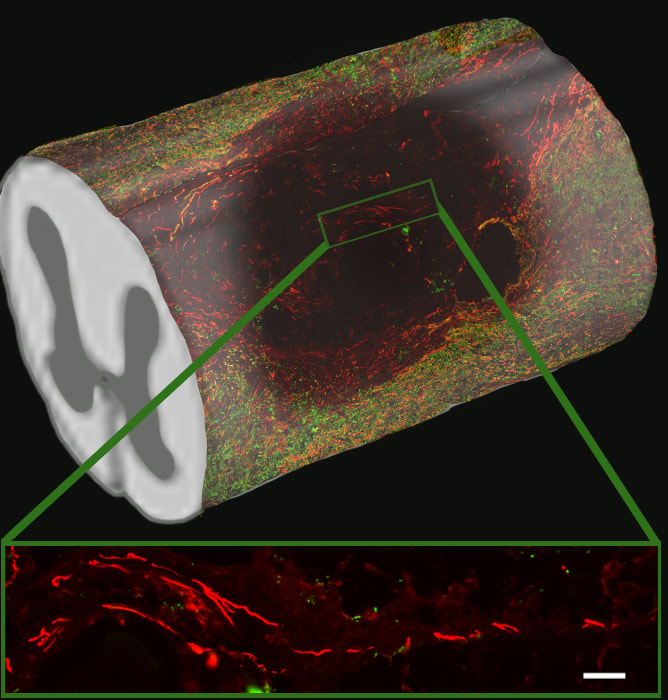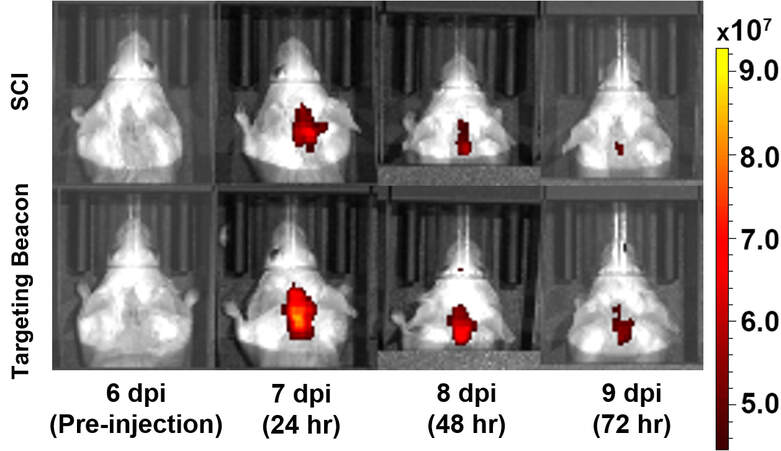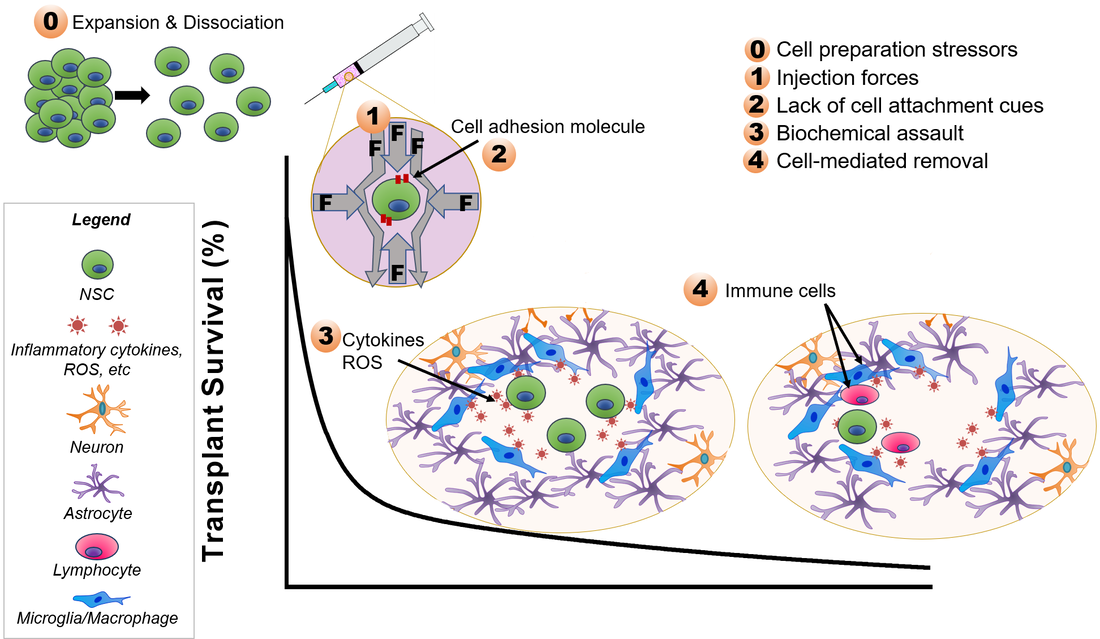Overview of NeuSTEM Research
The NeuSTEM lab focuses on the integration of neural engineering with immune and vascular engineering, as recent studies have begun to demonstrate that less well-studied extrinsic barriers to nerve regeneration, such as inflammation and hypoxia, synergize with the intrinsic barriers to prevent nerve repair. The goal of our research is to utilize mulicellular approaches to develop new therapeutic interventions (stem cells, biomaterials, drug delivery, gene therapies) that create a more conducive microenvironment that supports both endogenous and exogenous repair mechanisms.



